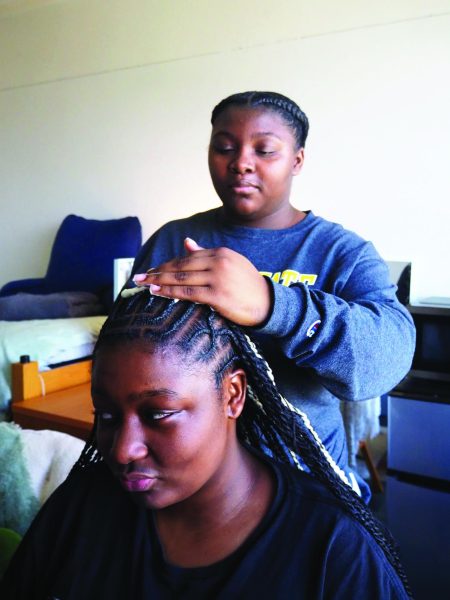Smash Bros. Club holds inagural meeting
February 17, 2016
“Who will win in a fight?” questions have abounded for as long as there have been two famous people with a penchant for violence.
Nintendo’s “Super Smash Bros.” franchise has endeavored to settle those questions with its ever-growing roster since 1999—nowhere else can a player have Mario, Link, Donkey Kong and Pikachu beat the tar out of each other with baseball bats.
Previously, fans of the series would have to network with each other through friends or random happenstance. As of the last official Student Senate meeting on Feb. 4, there is now an official club for players to meet through.
The Super Smash Bros. Club met for the first time on Monday in Gardner 114.
As part of an effort to appeal to all players, the club will offer access to all entries of the franchise.
The original game, on the Nintendo 64, had only 12 characters and was never intended for international release. These ranged from icons of video game culture to characters that the average American had never encountered. In one case, the game in question still hasn’t been released in the United States.
A sequel, Super Smash Bros. Melee, expanded the roster to 26 characters and spawned one of the most intense tournament scenes in recent memory. This was mostly due to quirks of the way the game ran, chief among them wave-dashing (a movement technique that grants high mobility without interfering with other actions). The end result was a high-speed game that could be won or lost with a single misstep.
In response to the relative madness that was Melee, Brawl returned to the creator’s casual-friendly vision. The accessible cast increased to 39 characters and most of the techniques competitive players took from Melee no longer worked, creating a much slower defensive game. Whether this was a good thing is up to the individual player.
Several enterprising players set up a modification for Brawl known as Project M, returning many of the tricks lost in Melee and taking an opportunity to improve where they could. This included adding several characters that the developers had never finished or made available. It was enough to convince the diehard Melee fans to come back, but remained a niche of the larger fandom.
Finally, there was Smash 4, released for the 3DS and Wii U. It brought a whopping 58 characters to play as, 7 of which have to be downloaded after getting the base game. The developers continued along with their trend of making it more casual-friendly. A competitive community exists, but it lacks the high-speed intensity of the early years.








